This newsletter for the week of June 9 heads to Mexico to look at some recent residential architecture rounded up in Casa Mexicana, published this week by Thames & Hudson. The book “from the archive” shows some houses in Mexico from nearly a century ago. In between are the usual headlines and new releases. Happy reading!
Book of the Week:
Casa Mexicana, by Jonathan Bell, photographs by Edmund Sumner (Buy from Thames & Hudson / from Amazon / from Bookshop)
With income inequality, the global population, and carbon emissions growing year after year, the logic of large single-family homes on sizable pieces of land is a less tenable proposition than ever before. In turn, my interest in drawing attention to books parading the latest residential architecture for the wealthy has waned over the years. If society would shift to address these economic, demographic, and environmental concerns, among many others, there would be more high-quality multi-family housing, denser neighborhoods, and more buildings using less energy—and a slew of books featuring the same. Yes, there are some people and places seeing such architecture being made, and accordingly publishers are making books with such buildings. Next week I’ll feature one of them, but this week I’m breaking from my kibosh over single-family houses to present a survey of Mexican houses that is being released this week by Thames & Hudson; it features texts by Jonathan Bell and photographs by Edmund Sumner.
The reasons I’m including Casa Mexicana are mainly regional: houses in Mexico are often overshadowed by those in its neighbor to the north, where the “American Dream” is synonymous with owning a single-family home, and Mexico is producing some of the best modern architecture this century, residential or otherwise. Another good reason is the photography of Edmund Sumner, which is excellent and has a proven track record when it comes to drawing attention to country-wide canvases: Contemporary House India was written by Robert Gregory but also featured photographs by Edmund Sumner, “whose consistent eye,” I wrote in 2021, “allows the diverse qualities of each house to come to the fore.” The same can be said about Casa Mexicana, which similarly features roughly two-dozen houses in four thematic chapters.
The four chapters—“Creative Spaces,” “Experimental Structures,” “Architectural Retreats,” “Family Houses”—hint at the way the book is a regional response to residential architecture in Mexico, not 26 specific variations on one family living together under one roof. For example, the first chapter, “Creative Spaces,” features a half dozen projects where making art and living coexist. There is an obvious precedent for this hybrid typology that Bell acknowledges in the chapter intro: “Mexico’s association with unique studios and live–work spaces can be traced back to Juan O’Gorman’s house and studio for the painters Frida Kahlo and Diego Rivera, completed in 1932.” (See the bottom of this newsletter for a publication on Mexican architecture published just a few years after that project’s completion.) Ironically, the chapter begins with a project designed by a Japanese architect, Tadao Ando’s Casa Wabi, a “sprawling arts complex that embraces the raw power of the Oaxaca coast,” but then it switches back to a more local endeavor, with Uruapan-born architect/artist Javier Marin’s Plantel Matilde, located in the Yucutan jungle. In the case of the first, at least, it is possible for the public to visit, something usually reserved only for houses that have been turned into museums, be it Villa Savoye in France, Fallingwater in Pennsylvania, or, back in Mexico, the Diego Rivera and Frida Kahlo House-Studio Museum.
Mexico’s rooted embrace of art means that experimentation is not limited to pavilions and other temporary structures; it can also be found in houses, as expressed in the second chapter, “Experimental Structures.” Among the book’s two-dozen projects, most of the houses that struck my fancy are in this chapter. These include HW Studio’s The Hill in Front of the Glen (La Colina Frente a la Cañada), a partially buried house rooted in the metaphor of the client “pulling up a bedsheet around oneself for security.” These words by Bell may bring to mind another house designed by HW Studio, one where the clients “shared their experience of being victims of a robbery in their home while they were away” and the architects responded with a windowless house. While the motivations may have been similar (and for all I know the clients were one and the same), the result at The Hill in Front of the Glen is dramatically different: a house that is landscape as much as building.
Another highlight in the “Experimental Structures” chapter is Fernanda Canales’s Casa 720, a circular mark in the landscape near Valle de Bravo, west of Mexico City. Canales has two houses in the book (Casa Terreno being the other one), and she also wrote the foreword, where she speaks of Mexican architecture as a reinterpretation of local traditions and distant precedents: “Aztec and Mayan courtyards, hacienda terraces, Islamic balconies, Native American wooden lodges, Le Corbusier’s Villa Savoye, Frank Lloyd Wright’s Fallingwater, […] plus Luis Barragàn, Frida Kahlo, Tadao Ando, Instagram and Pinterest images, and earth constructions.” Her words strike true in her two houses in the book, but really for most of the other 24. I think this consistency stems from the quality selection of houses as well as Edward Sumner’s photography, which Canales accurately describes as “evidence that creativity and improvised solutions are part of daily life in Mexico.”
Books Released This Week:
(In the United States; a curated list)
Architecture in Indianapolis: 1900–1920, by James A. Glass (Buy from Indiana University Press / from Amazon / from Bookshop) — “Preservationist and architectural historian Dr. James A. Glass describes the varied architectural currents that shaped buildings in Indianapolis during the first two decades of the twentieth century, a period when the Commercial Club of Indianapolis called the state capital ‘the largest inland city.”’ (The first volume, covering 1820–1900, was released last October.)
Dense + Green Urban Development: Emerging Models of Integrated Architecture, by Thomas Schröpfer (Buy from Birkhäuser / from Amazon / from Bookshop) — “This book explores sustainable integrated districts as models for high-density, high-liveability cities. It highlights how green elements are strategically deployed and integrated into broader systemic solutions at an urban scale.”
Stone: Ancient Craft to Modern Mastery, by Richard Rhodes (Buy from PA Press / from Amazon / from Bookshop) — “In this perceptive and illustrative look at the expressive and practical use of stone throughout history, Richard Rhodes unlocks the underlying principles of this ancient material—and explains the closely guarded ‘Sacred Rules’ of the Freemasons guild for the first time ever.”
Struggles in the Concrete: Architecture and the Marxist Tradition, edited by Luisa Lorenza Corna and Mark Crinson (Buy from Birkhäuser / from Amazon / from Bookshop) — “What are Marxist architectural history and criticism? What methods do they employ, and what are their objects of critical analysis? These questions have been asked before, but now more than ever, they require reassessment in light of the continuous expansion and revision of Marxism in response to new global crises.” (This is the 178th title in Bauwelt Fundamente, which launched in 1963 and therefore must be the longest-running architecture book series.)
Tend Poles in the Ground, by Stephen Bates (Buy from ACC Art Books [US distributor for Quart Publishers] / from Amazon / from Bookshop) — “Tent Poles in the Ground is a collection of twenty-one texts by Stephen Bates. Like Papers (2001), Papers 2 (2007) and Papers 3 (2016), which were written in collaboration with Jonathan Sergison, co-founder of Sergison Bates architects, Tent Poles testifies to the importance of writing as part of a form of practice that includes building and teaching.”
Thinking Through Soil: Wastewater Agriculture in the Mezquital Valley, by Montserrat Bonvehi Rosich and Seth Denizen (Buy from Harvard University / from Amazon / from Bookshop) — “Through a sustained analysis of the world’s largest wastewater agricultural system, located in the Mexico City–Mezquital hydrological region, Thinking Through Soil imagines what a better environmental future might look like in central Mexico.”
Full disclosure: As an Amazon Associate, AbeBooks Affiliate, and Bookshop.org Affiliate, I earn commissions from qualifying purchases made via any relevant links above and below.
Book News:
Read my interview with Botond Bognar at World-Architects, in which I speak with the emeritus professor, author, and expert on Japanese architecture about the latest update to his Architecture Guide – Japan, published by DOM in April to coincide with the opening of the Osaka Expo. (It will be released in the US in August.)
Wallpaper* looks at Frei Otto: Building with Nature, which “traces the life and work of the German architect and engineer, a pioneer of high-tech design and organic structures.”
STIR World has a review of Architect, Alison Thumel's debut book of poems, which she wrote “to rebuild her world around the absence of her brother.” It was written five years after she lost him, when she audited an architecture class on Frank Lloyd Wright.
This week's USModernist Radio features a bevy of authors: Nora Wendl speaking about her book on Dr. Edith Farnsworth, Todd Gannon about architect Frank Israel, and Kevin Murphy and Mary Anne Hunting on women architects in the early days of modernism.
From the Archives:
The first page of the March 1937 issue of Architectural Record, devoted to architecture in England, states that “modern architecture, almost non-existent five years ago, is now more at home in Mexico City in almost any other city in the world.” The statement was a tease for the April issue, which would have “in excess of 80 pages on the New Architecture in Mexico, almost all ‘Born photos,’” the last referring to architect and photographer Esther Born, who spent much of the previous year in Mexico documenting the country’s buildings. The April 1937 issue of Architectural Record was also released as The New Architecture in Mexico, a hardcover book that is hard to come by—thankfully, US Modernist Library has a PDF of the special Record issue, which I used for the interior spreads shown here.
Having looked at the hardcover book at the New York Public Library, I can attest that the bulk of it is the same as the magazine: 70 pages of buildings, typically one spread per project, coming after historical and contextual essays by Carlos Contreras (on urban development), Jose A. Cuevos (on civil engineering), F. Sanchez Fogerty (on “architect as contractor”), Justino Fernandez (above; on the development of modern architecture in Mexico), and Beach Riley (on social progress). The essays and projects were laid out by Born’s husband, Ernest, and are consistent from magazine to book; the latter has an additional 70 pages, split evenly between a “General Portfolio” and “Contemporary Painting and Sculpture.”
Given Casa Mexicana’s focus on houses, a couple spreads from The New Architecture in Mexico here show similar examples in the issue/book’s typological presentation of projects. First is Juan O’Gorman’s house and studio for Cecil O’Gorman (above), which is located next to the house that Juan O’Gorman designed for Diego Rivera and is noted as “the first ‘purely functional’ house in Mexico”; like Casa Mexicana, it is one of a few house–studio’s in the publication. There are also a couple houses designed by Luis Barragan (Speculation House is below), which in Born’s photos appear like they’d be at home in a book of International Style buildings; they are decidedly different than the postwar buildings Barragan became known for and which garnered him the Pritzker Architecture Prize in 1980. The publication captures how architects in Mexico embraced modern architecture in the 1930s, though the regional inflections found in Casa Mexicana were not yet at the fore.
Thank you for subscribing to A Weekly Dose of Architecture Books. If you have any comments or questions, or if you have your own book that you want to see in this newsletter, please respond to this email, or comment below if you’re reading this online. All content is freely available, but paid subscriptions that enable this newsletter to continue are welcome — thank you!
— John Hill

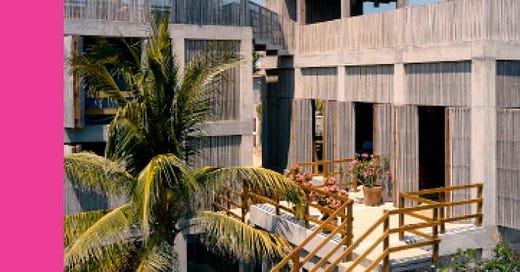



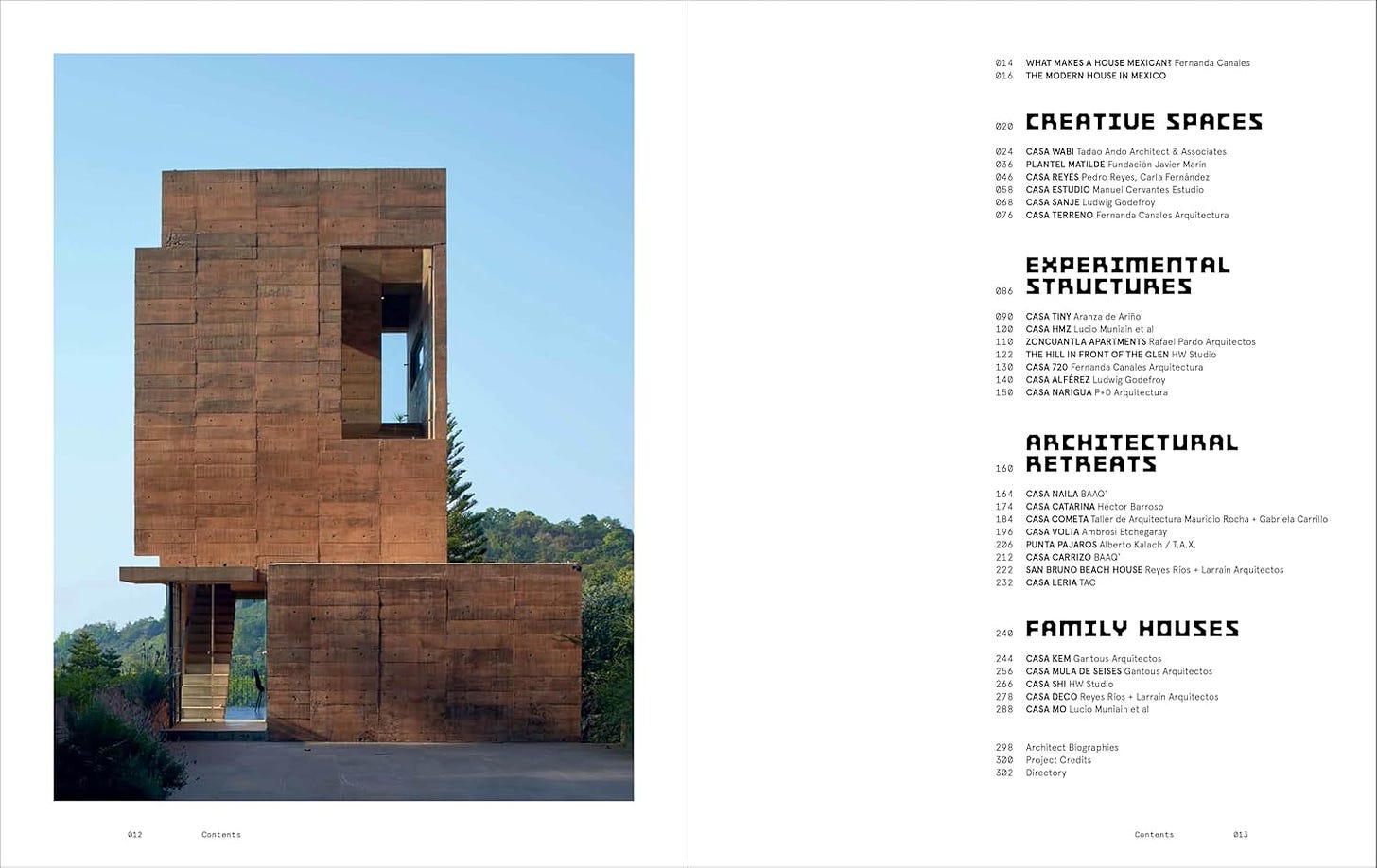
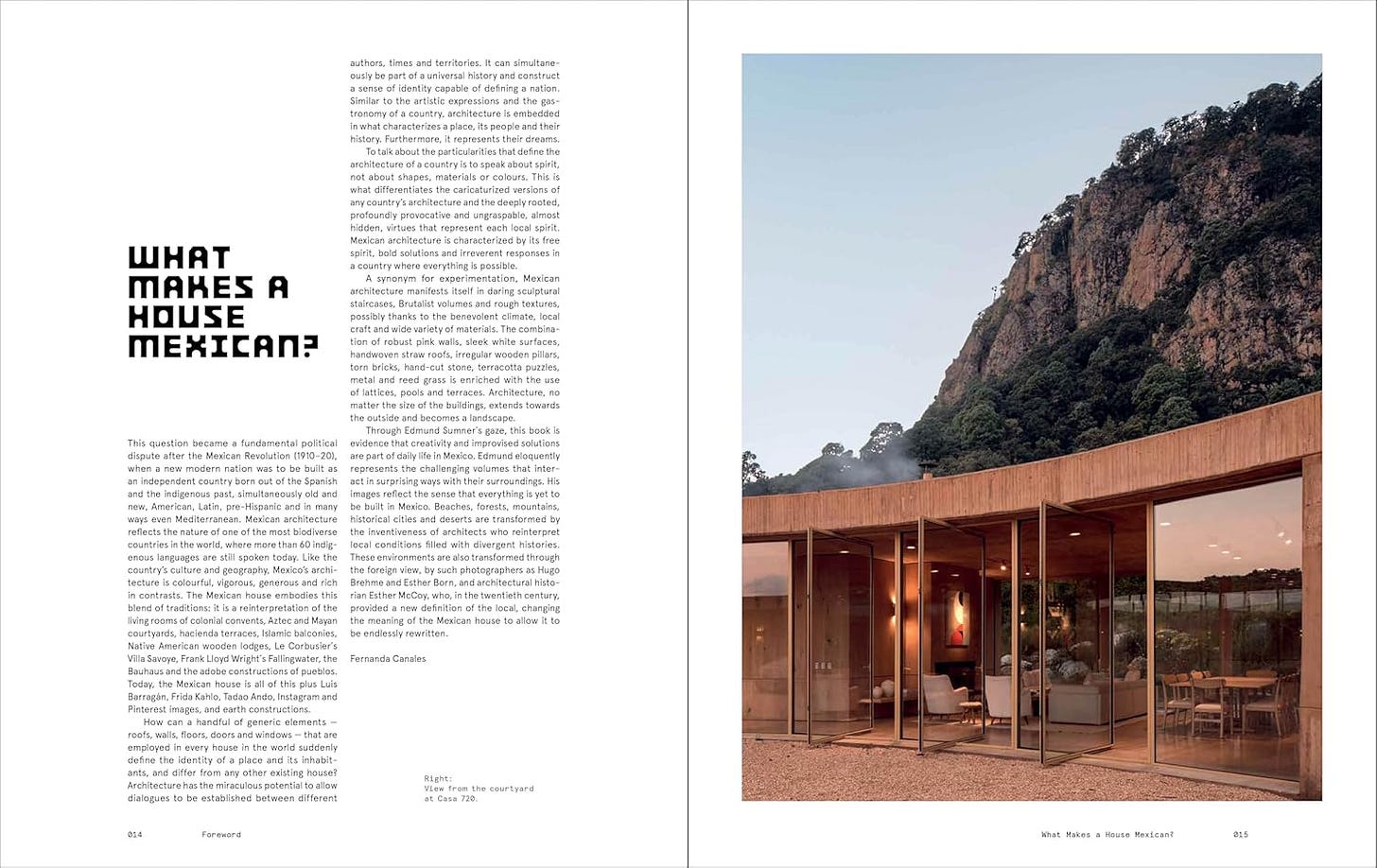



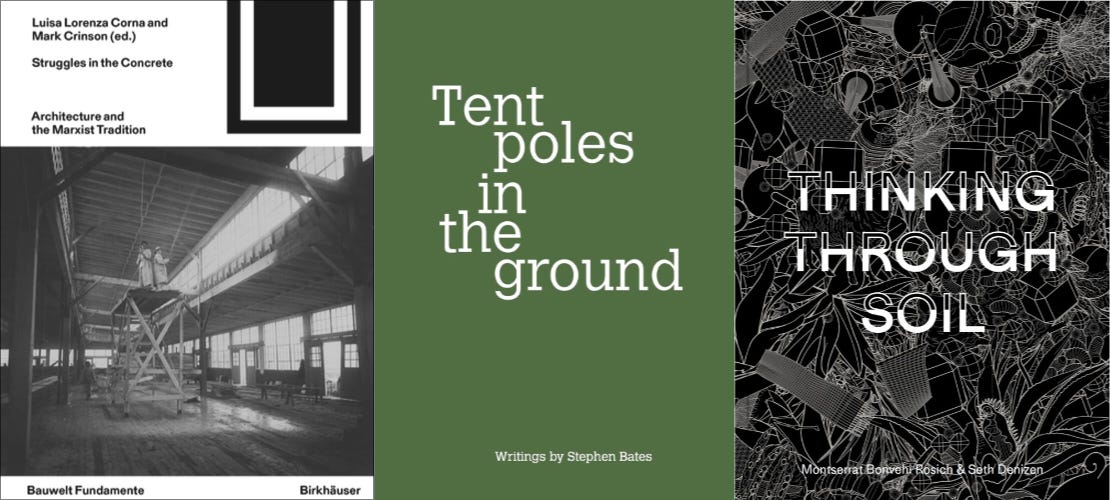
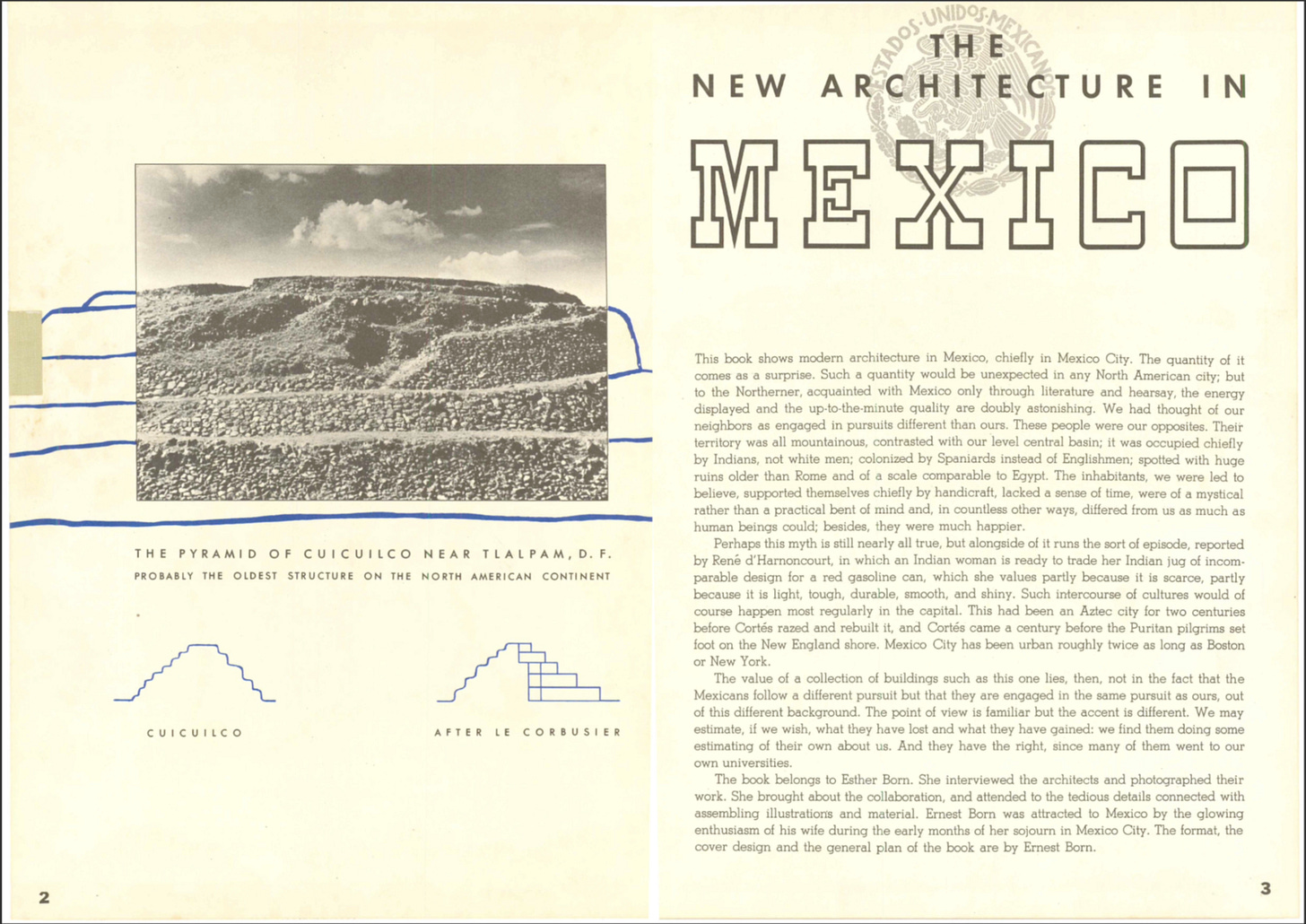
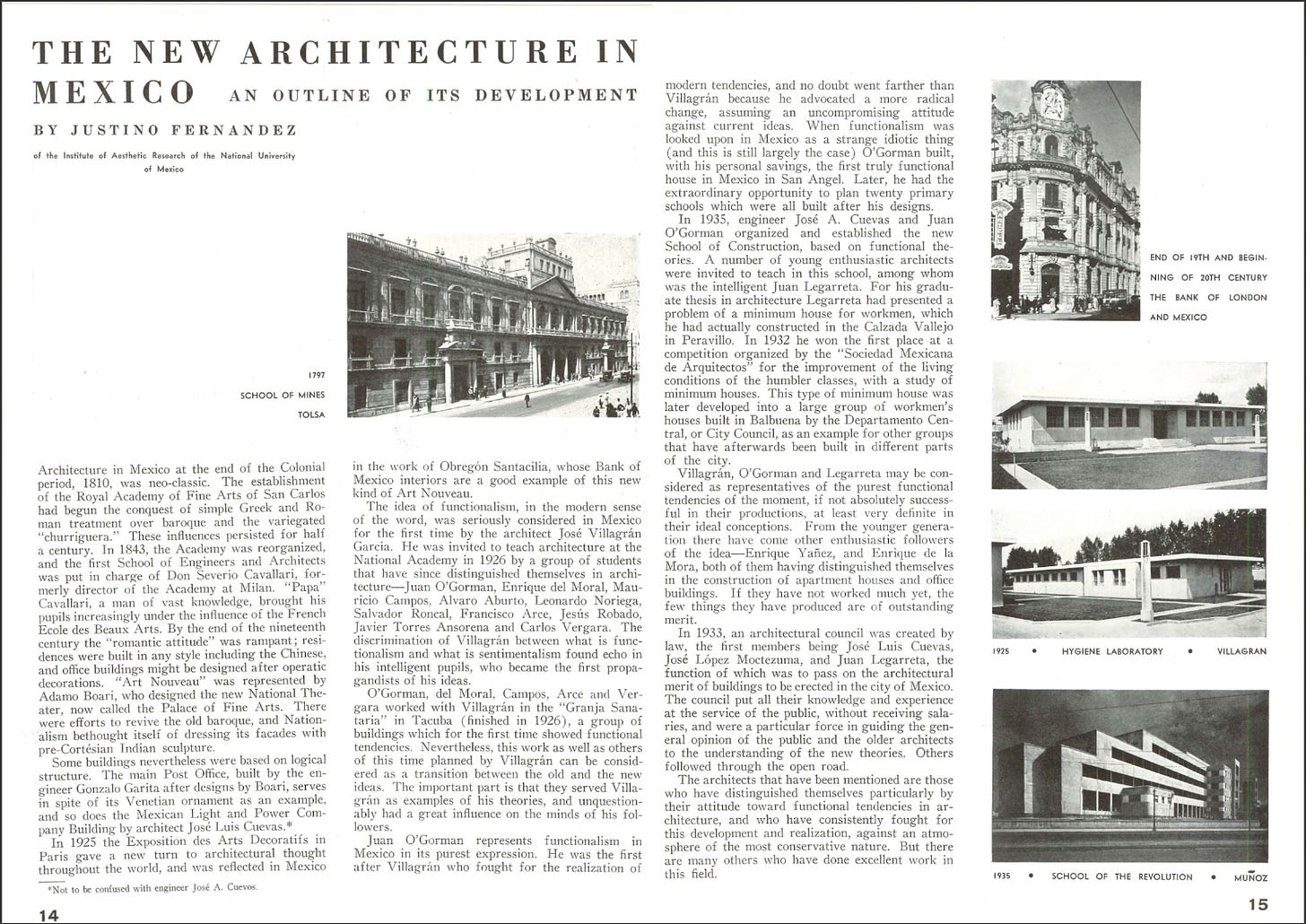
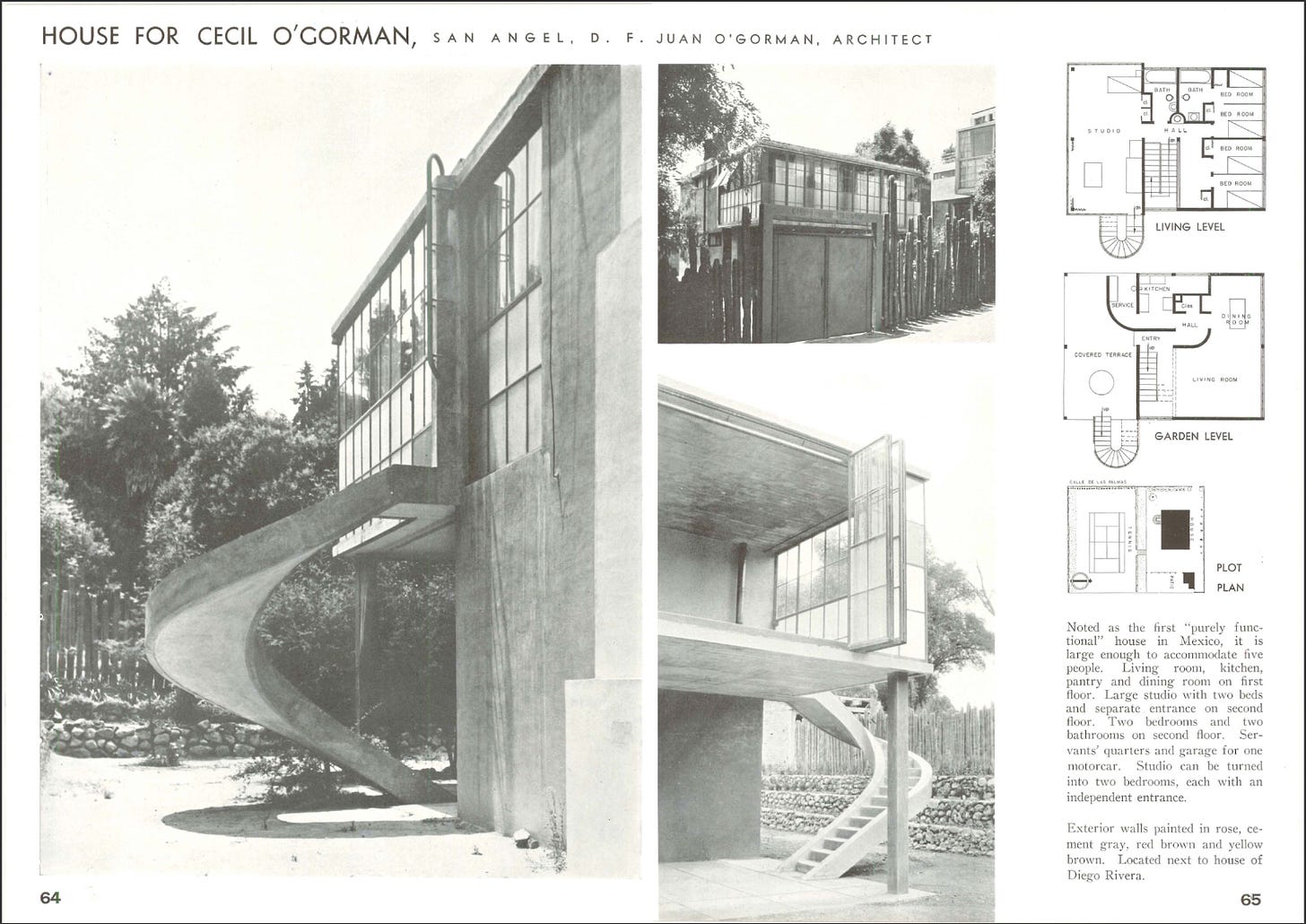
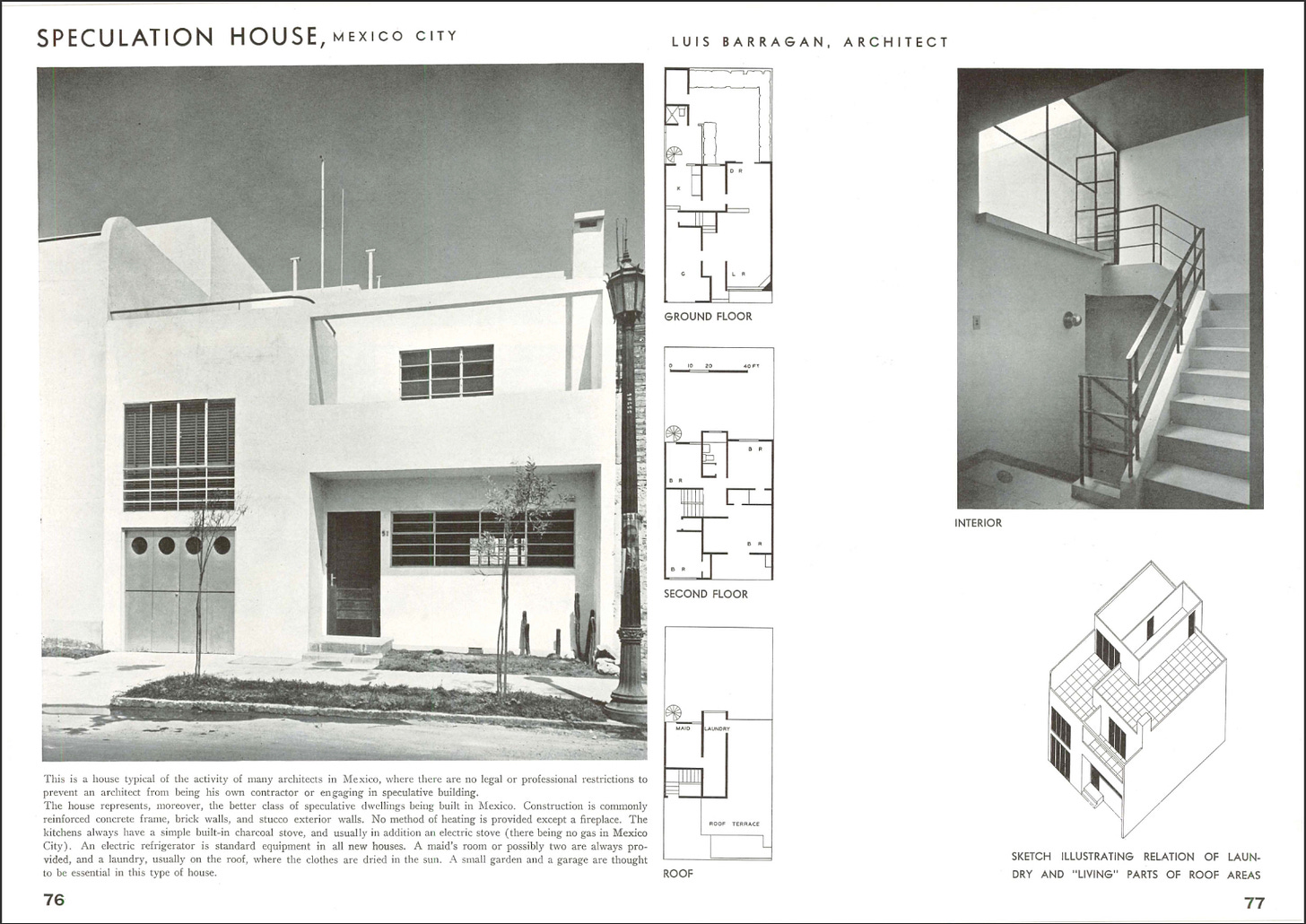
Great piece - I really enjoyed it! I'm struck by the similarities between Barragan's Casa Mexicana and the style of current fraccionamientos in Mexico, though that's perhaps due to my untrained architectural eye...!